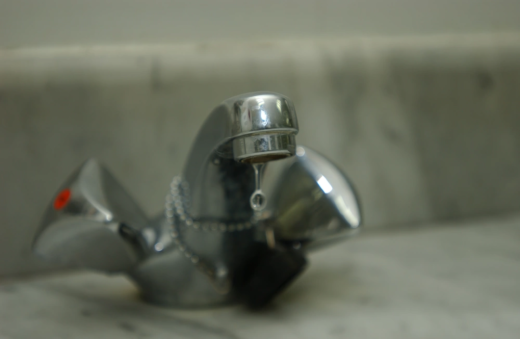Bucks County and the entire state of Pennsylvania is under a drought watch, according to an announcement Thursday from the Pennsylvania Department of Environmental Protection.
The declaration came after the Commonwealth Drought Task Force met to discus the lack of rain.
“While not required, residents and businesses are encouraged to voluntarily conserve water by reducing their nonessential water use,” a Pennsylvania Department of Environmental Protection statement said.
If conditions get worse, the governor could sign a drought warning or emergency status declaration, but none have been issued as of Thursday.
“Although this week has brought some welcome rain to much of the state, it’s not enough to make up for the lack of rainfall this spring, following a winter that brought little snowfall in many areas,” said Pennsylvania Department of Environmental Protection Acting Secretary Rich Negrin. “As a result, we’re seeing lowered stream flows, dropping groundwater levels, and persistent precipitation deficits. Water conservation, always a good practice, is especially helpful now as it’ll lessen potential future impacts on water supplies if rainfall continues to be scant this summer.”
Residents and businesses are encouraged to reduce their nonessential water use by 5 to 10 percent. For example, at home there are many simple ways to use less water:
• Run the dishwasher and washing machine less often, and only with full loads.
• Don’t let the faucet run while brushing your teeth or shaving. Take shorter showers. For example, consider not washing your hair daily.
• Water your lawn only if necessary. Avoid watering on windy and hot days. Watering grass lightly and efficiently will encourage healthier, deeper grass roots. Overwatering is wasteful, encourages fungal growth and disease, and results in shallow, compacted root systems that are more susceptible to drought.
• When mowing your lawn, set the blades 2-3 inches high. Longer grass shades the soil, improving moisture retention.
• Water your garden less often. If necessary, water only in the cooler evening or morning hours, and direct the water to the ground at the base of the plant. Focus on new plantings, which have shallow root systems. Older plants may endure dry conditions longer.
• Skip the car washing. If you have to wash your car, it’s better environmentally to go to a drive-through car wash that recycles the water.
• Sweep your sidewalk, deck, or driveway, instead of hosing it off.
• Check for and repair household leaks. For example, a leaking toilet can waste up to 200 gallons of water daily.
• Set up a rain barrel to be ready to repurpose rain when it does fall. For helpful information, see this Penn State Extension guide. Or just set out a bucket to capture water in the event of rain, and reuse it to water plants or the bird bath.
Additional tips for residents as well as fact sheets on how businesses such as lawn care services, landscapers, hotels, and restaurants can reduce water use, see the U.S. Environmental Protection Agency Drought and WaterSense.
The Bucks County Water and Sewer Authority recently asked customers to conserve water.
Drought watch, warning, and emergency status declarations aren’t based on one indicator alone, such as precipitation. State officials assesses information provided by public water suppliers and data on four hydrologic indicators: precipitation, surface water (stream and river) flow, groundwater level, and soil moisture.
The Pennsylvania Department of Agriculture encourages farmers to plan for dry conditions and to conserve water.
Additionally, the limited amount of rain has “dramatically increased” the risk of wildfires in the state.
The Pennsylvania Department of Conservation and Natural Resources has already reported 1,400 wildfires, compared to 1,036 in all of 2022. This year’s wildfires have burned more than 8,500 acres, compared to 2,700 acres in 2022.
State officials said 99 percent of wildfires are caused by people.
The Pennsylvania Department of Conservation and Natural Resources has asked Pennsylvanians to understand the factors that increase the risk of wildfires, including an available fuel source, such as dried grass or leaves; dry conditions, including low relative humidity; and an ignition source to start the fire, such as sparks from an automobile, machine exhaust, or burning trash.









